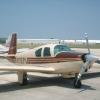-
Posts
4,693 -
Joined
-
Last visited
-
Days Won
36

cliffy replied to par's topic in Vintage Mooneys (pre-J models)

cliffy replied to Guitarmaster's topic in Vintage Mooneys (pre-J models)

cliffy replied to Glenn's topic in Vintage Mooneys (pre-J models)

cliffy replied to Jim Peace's topic in Vintage Mooneys (pre-J models)
We have placed cookies on your device to help make this website better. You can adjust your cookie settings, otherwise we'll assume you're okay to continue.